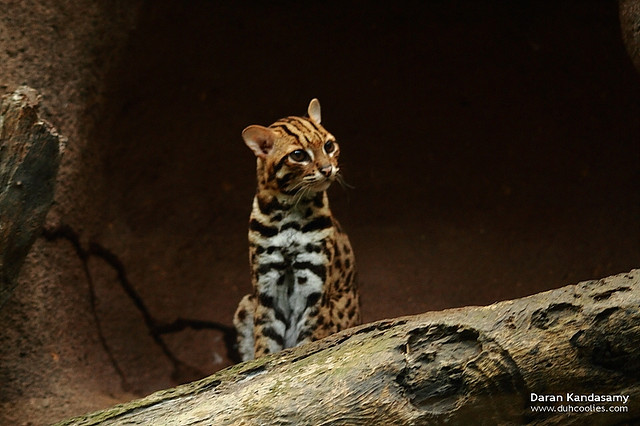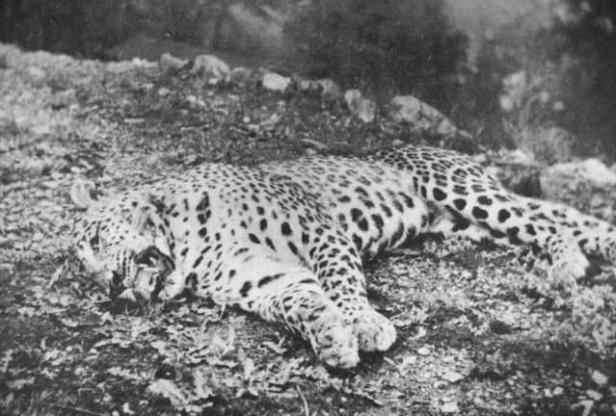Stealing Beauty. Red Listed Wild Cats That Are Nearly Extinct in the Wild
We think about our domestic cats incomparably more than about their wild counterparts, but 36 species of wild cats are included on the Red list, meaning they are experiencing negative population trends. We may lose some of them irreversibly in the near future.
Asiatic Cheetah
Not only the front man of the popular snack brand, this graceful wild cat is critically endangered.
Caracal
Caracals or desert lynx are well recognized by their long ears with tufts. They live in Africa, Central Asia, and Southwest Asia into India. African species are widely killed without restriction by farmers.
Bornean Bay Cat
It’s a wild cat found only on Borneo Island. There were less than 2500 mature individuals of this species in 2005.
Asiatic Golden Cat
Deforestation in Southeastern Asia caused the extinction of this marvelous cat. Its life is closely connected with trees and in this regard golden cat is an Avatar-like species.
Chinese Desert Cat
One more wild cat that is in danger because of hunting pressure. Currently their population is estimated to be about 10,000 mature individuals.
Sand cat
The Sand cat is a unique species being the only cat that lives in true deserts. It’s accommodated to range of temperatures from -5 °C to 50 °C. It inhabits the deserts of northern Africa and southwest and central Asia.
Small-spotted Cat
It’s also known as the black-footed cat. This wild cat is one of the smallest cats in the world. It inhabits Southern Africa and is listed as endemic species.
Continue to Page 2
Snow leopard
This albino-style cat is a desired trophy for hunters all over the world. Snow leopards live in the Asian mountains. This species is listed as endangered.
Eastern cougar
There are reasonable doubts about the survival of this wild cat. It’s believed that some individuals live in North America.
Florida Panther
Maybe there are more Florida panthers in the NHL team than in the wildlife. In recent years the population increased from 30 to 150 individuals in the wild.
Fishing cat
Fishing cats are distributed across South and Southeast Asia. They are called so because of living in wetlands. They are mostly nocturnal animals.
Flat-Headed Cat
The unique shape of the head determined its name. As fishing cats, they like swimming. There are less than 3,000 individuals left in the wild.
Leopard Cat
It looks like a toy leopard with head-body lengths of 15.3 to 26.0 in. They inhabit Central and Southeast Asia.
Marbled Cat
It can push its way down trees head-down like squirrels. With a long tail it resembles a snake. The whole population is estimated to be about 10,000 individuals. Marbled cats are small like the domestic ones.
Amur Tiger
Amur Tiger is one of the biggest living cats. There are about 400 adult individuals in the wild. They live in Far East Russia and are suffering the terrible hunting pressure.
Continue to Page 3
Iberian lynx
It’s a critically endangered species inhabiting the Southwestern Europe. According to information from 2013 there are 309 Iberian lynx living in the Spanish province of Andalucía.
Serval
Servals can be recognized by their in-proportionally small heads. It inhabits Central and South Africa, but the range is currently reduced by humans.
Margay
Margay is a small cat living in Central and South America. They were a respected property of wildlife collectors in 90s, so many of them were illegally carried out to private zoos.
Oncilla
This spotted small cat is jokingly called ‘tigrillo’. It’s listed as vulnerable. Oncilla is a nocturnal species living in Central and South America.
Pallas’s cat
Pallas’s cat or manul is a must-see animal. There are less than 10,000 individuals in the wild. They live mostly in Mongolia and across the Tibetan plateau.
Indian Lion
They live in the wild only in India’s Gujarat State, but their population is stably increasing the Gir Forest National Park, it is currently estimated at 411 individuals, but nevertheless it’s listed as endangered.
Anatolian Leopard
For about two decades Anatolian leopard was believed to be extinct, but in 2013 one of them was spotted on a camera trap. The species lives in some Turkish regions.
Amur Leopard
It is believed that only 30 individuals are left in Russia near the Chinese border.
Next time you play with your kitty on the cozy sofa, remember that there are many species of cats out there.


























What do you think?